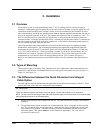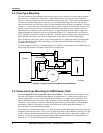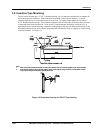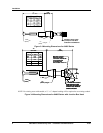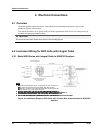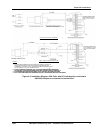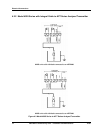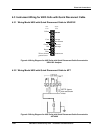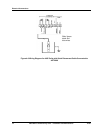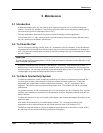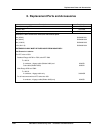
Maintenance
16 4905 Series Conductivity Cells – Installation and Maintenance 12/07
5.4 Platinizing the Cell Electrodes
Only the electrodes having constants 10 and 50 must be replatinized if the velvety-black deposit has been
rubbed off the electrodes in service or in cleaning or if platinized electrodes are recommended and this
black deposit is not present when the new cell is received. Always replatinize if a brush was used in
cleaning the electrodes. The indication of a need for replatinization of the electrodes is loss in sensitivity
(slow response of measuring instrument), erratic behavior of measuring instrument, or difficulty in
balancing. The electrodes of the high constant cells are not visible since they are located near the middle
of the flow channels. Therefore the need for platinization is only indicated by the effect on the measuring
instrument. Do not platinize cells intended for high purity water measurements.
Before platinizing, clean the cell with detergent and brush as described in Section
5.2.
Support the cell in a cylindrical vessel with the end of the cell raised from the bottom. It is not necessary to
remove the cell from the fittings for platinizing. However, the guard tube must be removed from the low
constant cells. Pour in a platinizing solution to a level above the cross-channel.
To platinize the 10 or 50 constant cells, immerse an auxiliary platinum electrode in the solution to a point
about midway between the cross-channel or tube hole and the open end of the cell. (This third electrode
should be chemically pure platinum. Its shape is unimportant. It may be one of the electrodes in another
conductivity cell or a platinum strip, sheet, rod, wire, etc.) Both electrodes of the cell are platinized
simultaneously by connecting the negative terminal of the battery (see
Table 5-1) to both leadwires of the
cell. Connect the positive terminal of the battery to the auxiliary platinum electrode. Note the time lapse
and continue the platinizing operation for the time in seconds listed in
Table 5-1. Then disconnect the
battery and remove the cell. Rinse the cell thoroughly in tap water and then rinse in distilled water.
During the platinizing operation, move the cell up and down gently to keep the solution stirred.
CAUTION
The preceding procedure produces a barely visible coating of platinum black on the electrode surfaces. Do not
attempt to darken electrodes by additional platinization since this will affect the cell performance adversely.
Pour the platinizing solution back into its container as it may be used a number of times.
If the cell is not to be installed immediately after platinizing, it should be kept submerged in distilled water
until put into use, as platinum black is not stable when dry.
Table 5-1 Voltage and Time Limits for Platinizing Cells
DC
Volts
10 50
6.0 100 sec. 300 sec.
12.0 ---- 240 sec.



